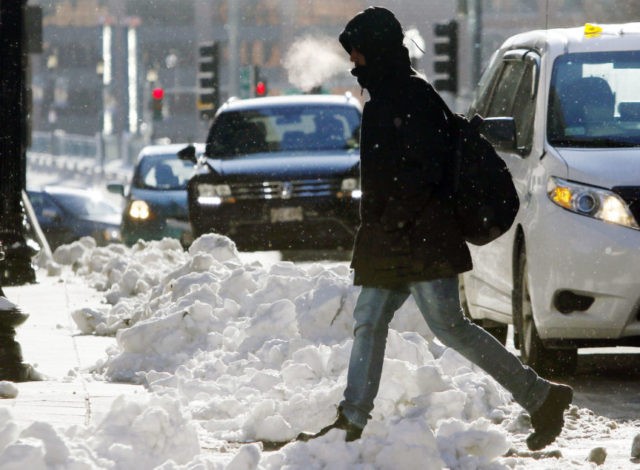PORTLAND, Maine (AP) — Plunging temperatures across half the country on Thursday underscored a stark reality for low-income Americans who rely on heating aid: Their dollars aren’t going to go as far this winter because of rising energy costs.
Forecasters warned people to be wary of hypothermia and frostbite from an arctic blast that’s gripping a large swath from the Midwest to the Northeast, where the temperature — without the wind chill factored in — dipped to minus 32 (minus 35 Celsius) on Thursday morning in Watertown, New York, near Lake Ontario’s eastern shore.
Even before the cold snap, the Department of Energy projected that heating costs were going to track upward this winter, and many people are keeping a wary eye on their fuel tanks to ensure they don’t run out.
Elizabeth Parker, 88, of Sanford, Maine, said she lives in fear of running out of fuel and remains vigilant in monitoring the gauge outside her trailer, just in case, especially during cold weather.
She said she is allowed to request a fuel delivery thanks to federal aid — but only when her gauge dips to one-eighth of a tank.
“I couldn’t get along without it,” said Parker, who lives with her 93-year-old husband, Robert, along with a cat, dog and four birds.
Prolonged, dangerous cold weather this week has sent advocates for the homeless scrambling to get people off the streets and to bring in extra beds for them. In western New York and Erie, Pennsylvania, residents were still cleaning up from massive snowfall. Frozen pipes and dead car batteries added to the misery across the region.
There was some good news for recipients of federal aid from the Low-Income Home Energy Assistance Program. President Donald Trump released nearly $3 billion, or 90 percent, of the funding in October after previously trying to eliminate the program altogether.
But projected energy cost increases will effectively reduce the purchasing power by $330 million, making it imperative that the remaining funding be released, said Mark Wolfe, of the National Energy Assistance Directors’ Association.
This winter, energy costs were projected to grow by 12 percent for natural gas, 17 percent for home heating oil, 18 percent for propane and 8 percent for electricity, according to U.S. Energy Information Administration.
But energy prices this winter may even be higher than those projections. According to Wolfe, colder weather could lead to even higher levels of consumption, and resulting prices could push the cost of winter heating up to $1,800 this winter for those using heating oil, 45 percent more than last year’s level.
“That’s a scary situation for people who’re really struggling to heat their homes,” said Barbara Crider, of Maine’s York County Community Action Agency.
The cold air is lingering with more artic air sweeping into the region, reaching as far south as Texas and the Florida Panhandle through the weekend.
In northern New England, the region is experiencing one of the longest, most intense cold snaps on record. In the Midwest, temperatures in Minneapolis aren’t expected to top zero this weekend, and it will likely be in the teens when the ball drops during on New Year’s Eve in New York City.

COMMENTS
Please let us know if you're having issues with commenting.